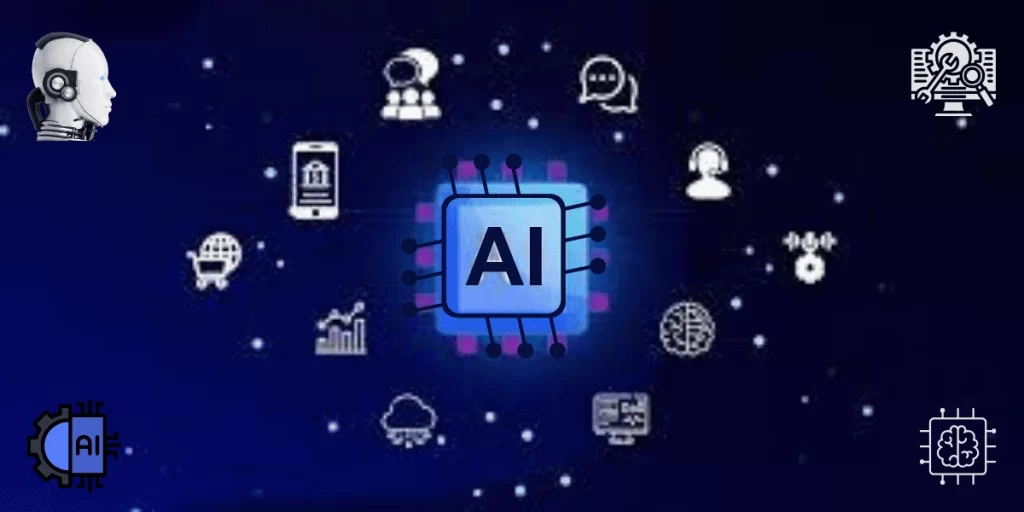In today’s digital age, the landscape of content creation is rapidly evolving. With the advent of Artificial Intelligence (AI), the possibilities for enhancing both writing and design have reached new heights. AI tools are revolutionizing how content is crafted and presented, making the creative process more efficient, innovative, and accessible than ever before. In this article, we will explore the realm of AI-powered content creation tools and how they contribute to elevating the quality of both written and visual content.
Table of Contents
- Introduction
- The Rise of AI in Content Creation
- AI-Enhanced Writing
- Natural Language Processing (NLP)
- Grammar and Style Improvement
- Generating Engaging Content
- AI-Driven Design
- Visual Content Generation
- Graphic Design Assistance
- Tailoring Design to Content
- The Symbiosis of AI Writing and Design
- Benefits of AI Tools in Content Creation
- Increased Efficiency
- Consistency in Branding
- Data-Driven Insights
- Multilingual Capabilities
- Overcoming Challenges and Concerns
- Maintaining Authenticity
- Creative Control and Adaptability
- Ethical Considerations
- Future Trends in AI-Powered Content Creation
- Conclusion
Introduction
The integration of AI technology into content creation processes has opened up a world of possibilities for writers, designers, and marketers alike. The synergy between AI and human creativity has resulted in tools that streamline tasks, optimize workflows, and amplify the impact of content across various platforms.
The Rise of AI in Content Creation
In recent years, AI has gained prominence as a game-changer in content creation. Machine learning algorithms, neural networks, and advanced data analysis have empowered AI to understand, replicate, and even enhance human-like language patterns and design aesthetics.
AI-Enhanced Writing
Natural Language Processing (NLP)
NLP, a branch of AI, equips machines with the ability to understand and generate human language. AI-powered writing tools leverage NLP to analyze the context, tone, and intent of content, resulting in more coherent and contextually appropriate writing.
Grammar and Style Improvement
AI tools go beyond traditional spell checkers by offering real-time grammar and style suggestions. These tools help writers maintain a consistent tone, enhance readability, and eliminate errors that could otherwise undermine the impact of their message.
Generating Engaging Content
AI can also generate content from scratch based on input data or prompts. This capability is particularly useful for generating product descriptions, social media posts, and other repetitive content, allowing human creators to focus on more strategic tasks.
AI-Driven Design
Visual Content Generation
AI tools can automatically generate visual content, such as images and videos, based on provided parameters. This not only speeds up the design process but also ensures that visual elements align with the overall content theme.
Graphic Design Assistance
For graphic designers, AI offers assistance in layout design, font pairing, and color selection. These tools provide creative suggestions that designers can use as a springboard for their own innovative ideas.
Tailoring Design to Content
AI enables dynamic design adjustments based on content type and platform. Whether it’s adapting an infographic for a social media post or resizing an image for a blog, AI ensures that design elements remain cohesive and effective.
The Symbiosis of AI Writing and Design
The true power of AI in content creation emerges when writing and design work in harmony. AI tools can analyze written content to inform design choices, ensuring that visual elements resonate with the message conveyed.
Benefits of AI Tools in Content Creation
Increased Efficiency
AI-powered tools significantly reduce the time and effort required for content creation. Writers can draft content more quickly, and designers can generate visuals without starting from scratch.
Consistency in Branding
Maintaining consistent branding across various content pieces can be challenging. AI tools ensure that brand elements are incorporated consistently, reinforcing brand identity and recognition.
Data-Driven Insights
AI-generated content can be analyzed for performance metrics, providing insights into what resonates with the audience. This data-driven approach enables content creators to refine their strategies over time.
Multilingual Capabilities
AI-powered translation tools facilitate content localization, breaking language barriers and enabling brands to reach global audiences effectively.
Overcoming Challenges and Concerns
Maintaining Authenticity
One concern surrounding AI-generated content is the potential loss of authenticity. Striking a balance between AI assistance and human creativity is crucial to preserve the unique voice of content creators.
Creative Control and Adaptability
While AI can offer suggestions, humans possess the nuanced creativity necessary for exceptional content. Content creators must retain control and adapt AI-generated content to align with their vision.
Ethical Considerations
The use of AI in content creation raises ethical questions, such as proper attribution for AI-generated work and transparency about the involvement of AI in the creative process.
Future Trends in AI-Powered Content Creation
As AI technology continues to evolve, we can expect even more sophisticated tools that seamlessly integrate AI-generated content into the creative ecosystem. Collaboration between AI and human creators will become more nuanced, leading to unprecedented levels of content innovation.
Conclusion
AI tools for content creation represent a significant leap forward in how we craft and present ideas. By enhancing both writing and design, AI empowers creators to produce higher-quality content, engage audiences more effectively, and navigate the dynamic landscape of digital communication with confidence.
FAQs
AI has made significant strides in content creation, but the complete replacement of human content creators is unlikely. While AI can generate text, images, videos, and even music, it lacks the genuine creativity, emotional intelligence, and unique perspective that humans bring to their work. Human content creators possess the ability to understand complex nuances, emotions, and cultural contexts that are often challenging for AI to replicate. AI can be a valuable tool for enhancing efficiency and providing inspiration, but the human touch remains irreplaceable when it comes to producing truly original and authentic content.
AI tools ensure the authenticity of content through a combination of techniques. Natural Language Processing (NLP) models, for instance, are trained on vast amounts of diverse text data to mimic human language patterns. However, authenticity verification is an ongoing challenge. AI-generated content might lack accurate factual information or could inadvertently produce biased or misleading material. To address this, developers work on improving AI models through continuous training and validation processes. Additionally, integrating fact-checking algorithms and human oversight can help verify the accuracy and authenticity of AI-generated content.
Numerous industries stand to benefit from AI-powered content creation. E-commerce can use AI to generate personalized product descriptions and recommendations. Marketing and advertising can harness AI for crafting tailored campaigns. Journalism can use AI to sift through vast data sources and produce news summaries. Entertainment can employ AI for generating special effects and enhancing post-production. Education can leverage AI to create interactive learning materials. Overall, any sector that requires content production at scale or demands data-driven customization can benefit from AI-powered content creation.
Yes, there are privacy concerns associated with AI-generated content. AI models are often trained on large datasets that might contain sensitive personal information. This raises the risk of inadvertently generating content that discloses private details. Additionally, deepfake technology, a form of AI-generated content, can create convincing but fake videos or audio recordings, leading to potential misuse for defamation or spreading misinformation. As AI-generated content becomes more sophisticated, ensuring the responsible use of such technology while respecting privacy rights becomes a critical concern.
Content creators can adapt to the evolving AI landscape by embracing AI as a tool to enhance their work rather than replace it. They can:
- Collaborate with AI: Utilize AI tools to streamline tasks, such as data analysis, content generation, and image editing, allowing more time for creative aspects.
- Leverage Personalization: Use AI-driven insights to tailor content to specific audiences, improving engagement and relevance.
- Develop Unique Perspectives: Focus on creating content that reflects human emotions, creativity, and originality, areas where AI currently struggles.
- Stay Updated: Keep learning about AI advancements and their applications in content creation to remain competitive in the field.
- Verify and Edit AI Output: Even when using AI-generated content, maintain a critical eye and ensure accuracy, authenticity, and ethical standards.
By striking a balance between human creativity and AI’s efficiency, content creators can navigate the evolving landscape and continue to produce impactful and meaningful content.








Nice content.
Can AI give solutions for rehabilitation medication?
Or can AI provide any solution medical field?
Nice content.
Can AI give solutions for rehabilitation medication?
Or can AI provide any solution medical field?
Thank you